One of the most significant achievements of the human mind and its forefather A. S. Popov
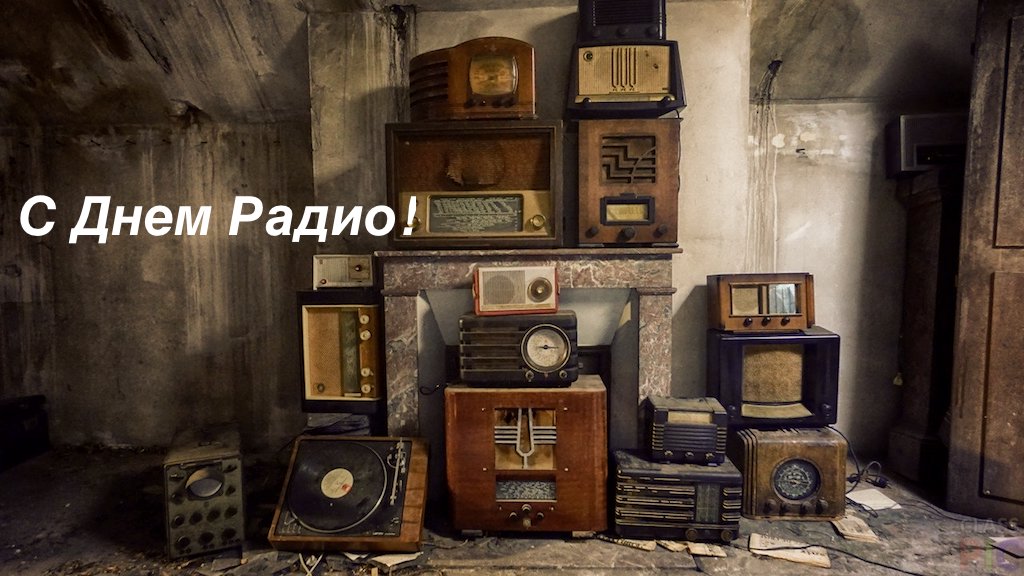
Given the crucial role of radio in the cultural and political life of the population and for the defense of the country, in order to popularize the achievements of domestic science and technology in the field of radio and to encourage amateur radio among the general population, establish May 7 annual Radio Day.
For 73 years now, Radio Day has been celebrated on May 7 every year. On behalf of ua-hosting, we want to congratulate employees of all communication sectors on their professional holiday! Radio communication is a great achievement and it would be overestimated for humanity how hard it is.
The development path of this industry, from the first wireless signal transmission system to modern terrestrial and space radio systems, has been going on for more than a century. M. Faraday, who discovered the phenomenon of electromagnetic induction and put forward the hypothesis of the existence of an electromagnetic field, D. -K. Maxwell substantiated this hypothesis and created the electromagnetic theory of light, the German physicist G. Hertz experimentally confirmed it ... Nevertheless, the celebration of Radio Day was timed to May 7 for a reason, precisely on this spring day in 1895 A. Popov demonstrated the world's first radio receiver, although only after 50 years in 1945 the red dates in the calendar officially became one more.
Engineers, inventors, sailors, military, and media representatives consider their colleagues to be Popov.
I would like to once again recall this amazingly talented scientist, who became the forefather of one of the most significant achievements of the human mind - radio. Tirelessly and persistently, the inventor walked towards the realization of the idea of wireless communication, which had long been "in the air."
March 16, the distant 1859, the Turin mines of the Verkhotursky district of the Perm province (now Krasnoturinsk). In a mining village, in a respected family of clergyman Popov, a son was born, named him Alexander. Father is the rector of the Maximov Church Stepan Petrovich Popov (1827–1897), mother is Anna Stepanovna Popova (1830–1903). The boy was not bored in the family; besides him, his parents raised six more children: Raphael, Katerina, Maria, Anna, Augusta, Capitolina.
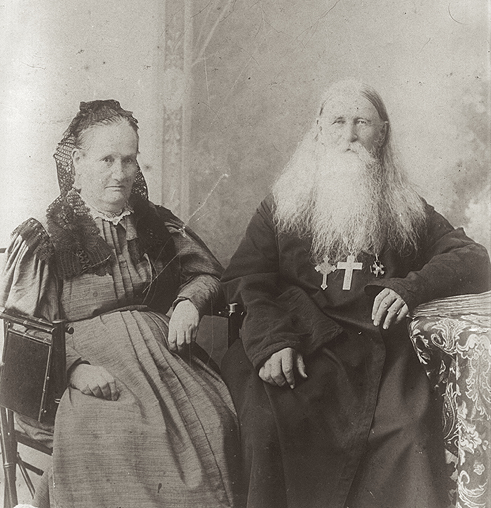
Senior Popovs
About Popovs, there was a good rumor among fellow villagers, they were considered a friendly and loving family. Being a well-educated and wealthy man, Stepan Popov organized and maintained a school for girls and taught classes at the mining school. The wife also took part in the life of the school for girls, taught children needlework.
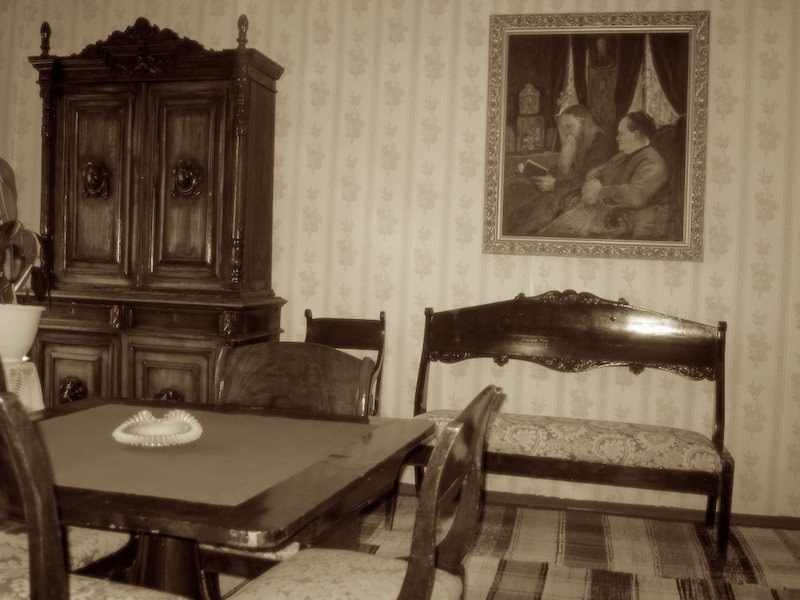
At home, Father Abbot Stepan always welcomed guests and visitors. My father maintained relations with many graduates of the Petersburg Mining Institute, engineers, perhaps their conversations, outlooks on life and instilled the interest of Alexander in technology. The boy often visited the workshops, examined various devices and mechanisms. Like all curious boys, he independently constructed something. In such an atmosphere, Alexander’s childhood passed.
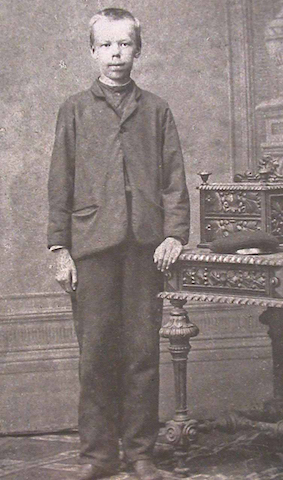
As expected for the children of priests, Alexander received knowledge in the Dalmatov (1869−1871) and Yekaterinburg (1871−1873) theological schools, after which he entered the Perm Theological Seminary. A. Popov studied gloriously, persistently, in 1877 he brilliantly graduated from seminary and for excellent grades received the right to enter the university. Having gathered things, Alexander, together with his sisters Anna and Augusta, went to enter Petersburg University.
At that time, his older brother Raphael, a graduate of the historical and philological faculty of St. Petersburg University, already lived in Petersburg. Alexander Popov chose the Faculty of Physics and Mathematics, received a scholarship for good studies, for which he lived in the first and third courses, later, in order to earn money, the young man worked as a tutor.
In 1880, on January 30, to promote the development of electrical engineering, Russian electrical engineers and inventors - among them P.N. Yablochkov, A.N. Lodygin, V.N. Chikolev - they organized the Special Electrotechnical Department as part of the Russian Technical Society. They called it the Sixth Division, since it was the 6th formed department of the Imperial Society. The whole Russian electrotechnical community began to gather around the department, not only the pioneers of Russian electrical engineering, but also telegraph workers, professors, and people holding senior positions in government and military institutions. In July of that year, the first issue of the first domestic electrotechnical magazine "Electricity" was released.The magazine is considered one of the first in the world of special electrotechnical publications. Although on an industrial scale Russia at that time was a country lagging behind the West, few people were equal to it in terms of human resources and the concentration of the great minds of mankind. The end of the 19th century can be called the “boom of inventors”, in Moscow and St. Petersburg not only scientists and engineers worked on electrical engineering issues, but also ordinary workers and just amateurs. All of them were united by a common vocation called “ingenuity”: they improved telegraphs, telephones, electric lamps, and galvanic cells. The public needed bread, which later became the magazine "Electricity", a kind of allowance for the period of the birth of electrical engineering.
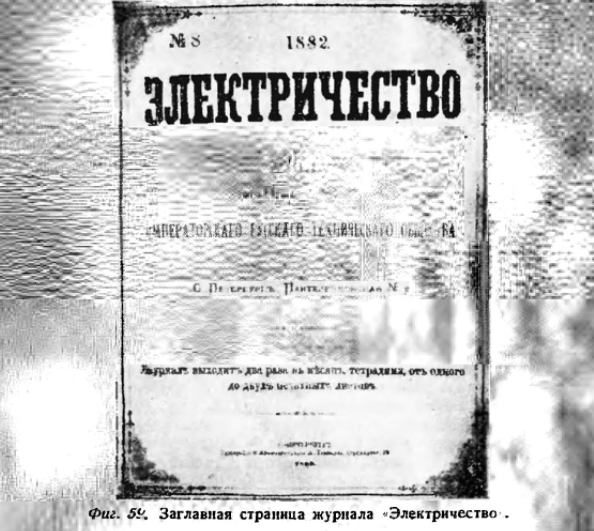
During his studies, Popov absorbed theoretical knowledge like a sponge. In March 1880, the First Electrotechnical Exhibition opened in the Salt Town on the banks of the Fontanka. Alexander Popov was invited as a consultant. Various means of communication were presented at the exhibition, among them telegraphy devices of Shilling, Jacobi, Morse and others. Not in words, but in practice it was possible to get acquainted with the devices, get acquainted with famous scientists-electrical engineers.
As for practice, Popov worked as a fitter in the Electrotechnician Partnership, organized in 1880. In a word - the knowledge base was not small. In 1882, he graduated from the university, defended his thesis on "On the Principles of Dynamo-DC Machines" and received a candidate’s diploma.
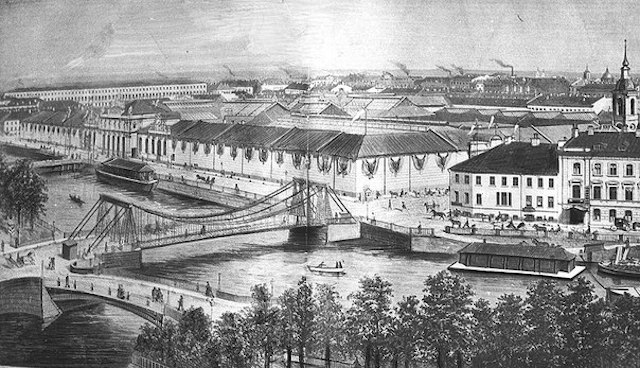
A.S. Popov remained at the university to prepare and obtain the academic title of professor. A year later, he was invited to teach at the Mining School in Kronstadt. He took the place of the teacher and the head of the physics room in the Miner's officer class, was the head of the practical classes in galvanism, and lectured in higher mathematics. Well-equipped classrooms and laboratories, an excellent library, work with naval officers, a salary of only 100 rubles created favorable conditions for Popov's incredibly important work for the next 18 years of his life.
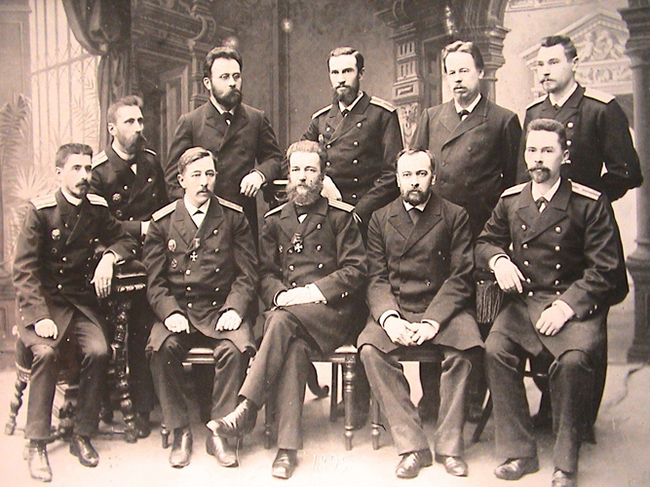
The mine school was one of the first electrotechnical educational institutions in Russia. The mine officer class was opened in 1874 in the building of the first training naval crew (Kronstadt), after which work began on the reconstruction and equipment of classrooms and premises.
The Russian fleet, in the conditions of its rapid development, as never before needed to solve the problem of exchanging information, to equip the Russian fleet with radio communications - this goal was set by A.S. Popov.
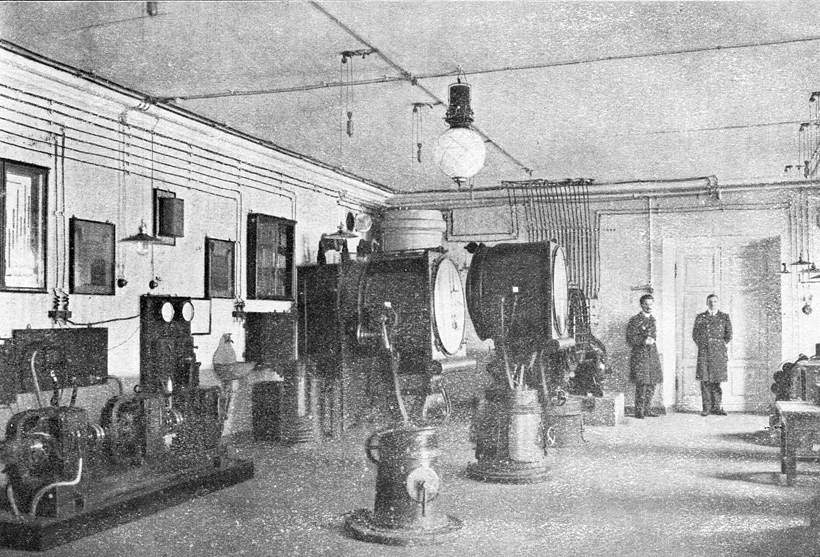
The electrical engineering office of the Mine School
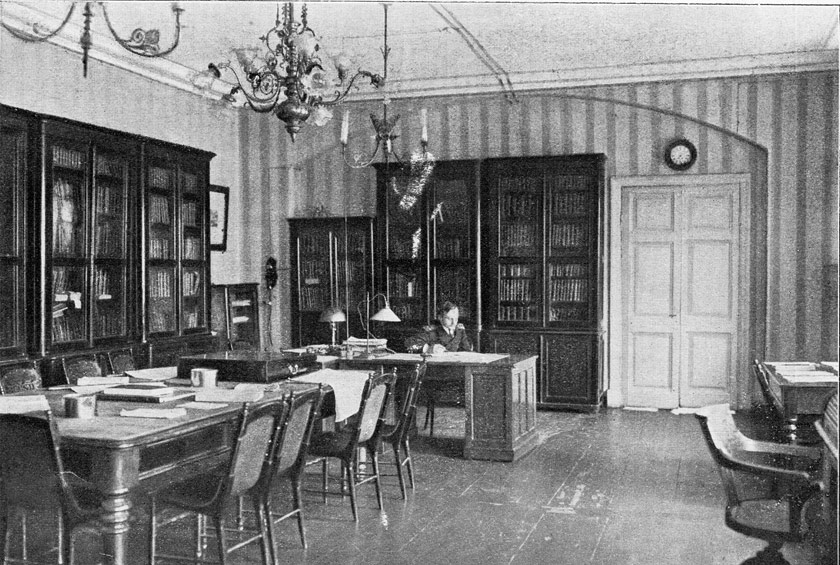
on November 18, 1883, Popov married Raisa Alekseevna Bogdanova. Raya, the daughter of a lawyer, took lessons from Alexander, preparing to enter the Higher Women's Medical Courses at the Nikolaev Military Hospital (later the Women's Medical Institute, the First Medical Institute named after Academician I.P. Pavlov).
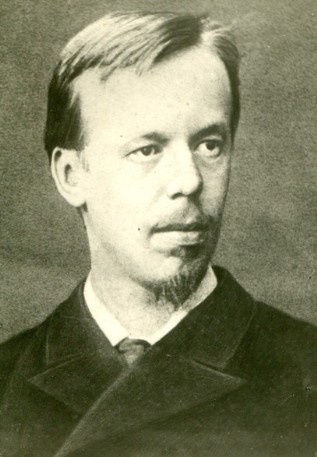
Alexander Popov, 1883
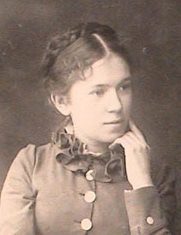
Raisa Alekseevna Bogdanova
Raisa was born in 1860 in the family of a lawyer living in St. Petersburg. The father did everything for his daughter to become an educated woman. At that time, it was not enough for a female gymnasium to enter the university, it was necessary to successfully pass the exams for the certificate of maturity at the male gymnasium:
Alexey Ivanovich Bogdanov advertised in a newspaper that he was looking for a tutor to prepare for the matriculation exam. By announcement, a second-year student at the Physics and Mathematics Faculty of St. Petersburg University came. He began to study with Raisa Alekseevna.
And so began their not-so-long history of living together. The young family, before graduating from the Raisa Institute for three years until 1886, lived separately, Alexander in Kronstadt, Raisa in St. Petersburg. After graduation, having received a silver badge “Woman is a doctor”, Paradise moved to her husband in Kronstadt. Here she worked at the Kronstadt Naval Hospital, was engaged in teaching, conducted hygiene and natural sciences, plus she worked as a school doctor. Easy to handle people and kind soul man - such was this nice girl. Raisa Alekseevna's fragile shoulders fell materially responsible for the family, Alexander spent most of his earnings on research and invention. She was not only his muse, but also the sponsor of his research. One of the first women innovative doctors, a successfully practicing and fairly well-earned woman, Raisa was also a volunteer in the hospital of the Pokrovskaya community of nurses, and during the First World War she was in the hospital. She received the gold medal "For diligence" for her services.
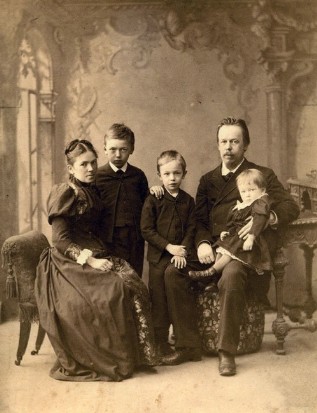
So little time was spent on quiet family evenings, constantly in work, inventions, no rest from official affairs. At the family council, it was decided to purchase a plot, and at least in the summer to have a good rest away from work troubles.
Accidentally learning about the sale of a plot of forest near Lake Kubycha, near the village of Laikovo, they went there. There was a log house in the forest. Magnificent ship pines were lit by the setting sun. Alexander Stepanovich, an avid fisherman, wanted to fish here. It was decided to purchase a manor.
It was not possible to manage to fully enjoy the soothing nature of the Tver province in the family circle. Soon, Alexander Stepanovich fell ill and died suddenly, leaving his wife with 4 children.
But, returning to the heyday of Popov's creative activity: research in the field of electrical engineering, magnetism and electromagnetic waves, this is what the scientist lived. In the summer of 1887, Popov developed a photometric research technique, and created a photometer for photographing the solar corona.
By tirelessly working, by 1889 Popov came to the conclusion that electromagnetic waves can be used for wireless communication, using “Hertz rays” or “rays of electric force” for signaling at a distance without wires. What was announced to them at public reports. 1889 is considered to be the year of the beginning of the work of A.S. Popova in the field of wireless communications. Two years before, 2 articles of Hertz were published, in which they talked about confirming the validity of Maxwell's theory and the results of Hertz's experiments.
In 1893, A. S. Popov was invited to the World Exhibition in Chicago, visited New York and San Francisco, and on his return trip visited Berlin, London and Paris. Managed to become a member of the French Physical Society. He was incredibly impressed by the achievements of the American inventor N. Tesla. Returning to his homeland, Popov gave lectures in Kronstadt - on the electrical department of the World Exhibition and in St. Petersburg - on the “teleautograph” of I. Gray.
Popov continued to work on the problem of creating a device (like many other world scientists) capable of detecting the presence of high-frequency electromagnetic radiation, this was his “obsession”. May 7, 1895. The meeting of the Russian Physico-Chemical Society. Alexander Popov prepared a report and demonstrated the world's first radio receiver, a device that could receive a sequence of “short and long signals” - transmit elements of Morse code. This day went down in history as the birthday of the radio. A.S. Popov:
In conclusion, I can express the hope that my device, with its further improvement, can be applied to transmitting signals at a distance using fast electrical vibrations, as soon as a source of such vibrations with sufficient energy is found.
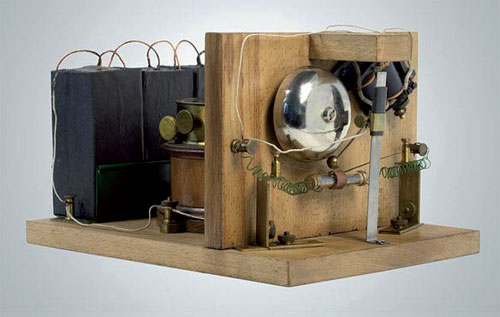
The "radio conductor" of the French scientist Branly, improved by the English physicist O. Lodge, the coherer, did not provide the ability to receive a sequence of signals transmitted using electromagnetic waves. Popov also invented a new scheme for automatically recovering the sensitivity of the coherer, which solved the problem of providing wireless communications. I connected a relay to the circuit with the coherer, which ensured the connection of an electric bell: the hammer of the actuator struck the tube, thereby shaking the sawdust, and restored the coherer's resistance after receiving each sending of damped electromagnetic oscillations. In the summer of 1896, Popov, at a meeting of the Russian Physicochemical Society, transmitted the world's first radiogram to a distance of 250 m, later the range of wireless communication was increased to 5 km.
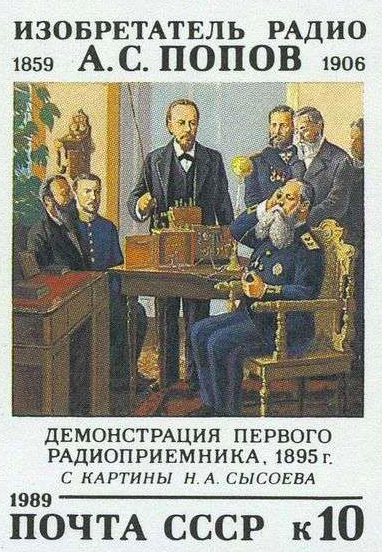
A. S. Popov was a very modest man and incredibly loyal to Russia. Perhaps such an upbringing partly did not allow him to assert his rights to the invention of radio, and partly the secrecy created around his invention did not allow it either. Let's not forget that Popov worked as a teacher in a military institution, and the military miraculously understood that the creation of a wireless telegraph and communications carries enormous military advantages. The Maritime Department sponsored the work of Popov, but the amount allocated was ridiculous only 900 rubles. The Americans offered Alexander 30 thousand rubles (33 million in terms of) as payment for moving to the United States with his family. He refused.
In 1899, the scientist created a receiver for receiving signals by ear using a telephone handset. All this greatly simplified the reception scheme, and the range of radio communication increased. In 1900, communication was possible in the Baltic Sea at a distance of more than 45 km between the islands of Gogland and Kutsalo. After that, the wireless telegraph became the main means of communication on military ships.
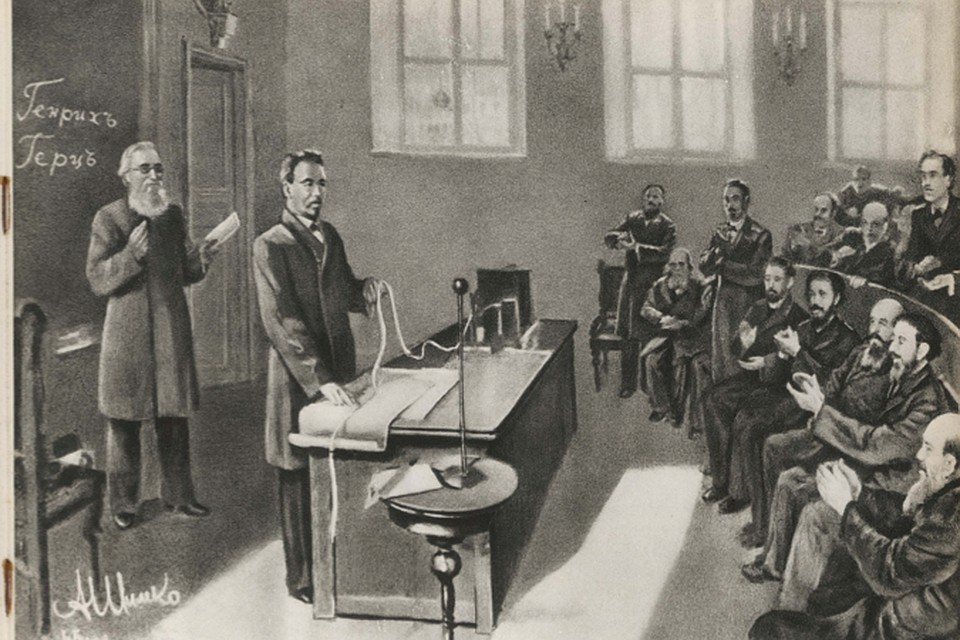
In March 1901, A.S. Popov left the Mine School and took the post of full professor of physics at ETI. Alexander developed a number of courses in physics, created a scientific laboratory. In 1905, Alexander Stepanovich gave many lectures on wireless telegraphy, he was invited to give presentations, he trained engineers (graduates of ETI), he oversaw issues of equipping the fleet with wireless telegraphy equipment.
In the fall of 1905, after a revolutionary wave, the higher school gained autonomy; the ETI council elected Popov as its director.
On October 20, a red flag appeared in the window of the student dormitory of the institute with the words: "Long live the democratic republic." A number of calls to the Ministry of the Interior followed. After one of these conversations at the 47th year of life on January 13, 1906, Alexander Stepanovich Popov suddenly died of a brain hemorrhage.
He was buried at the Volkovsky cemetery in St. Petersburg.
The scientific feat of Alexander Stepanovich Popov is immortal, the inexhaustible legacy left to mankind
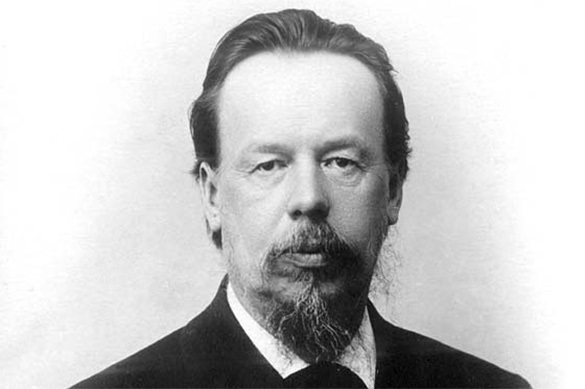
He was the first to invent the coherer radio telegraph receiver, the first spark radiotelegraph system, the first device for recording electromagnetic radiation of atmospheric origin - a light detector, the first detector radio receiver for receiving telegraph signals first crystalline point diode, first radiotelephone system. He found the opportunity and designed devices that brought the idea of wireless communications to life, was able to amplify weak signals using a relay, invented the receiving antenna and grounding. The world's first radio link to the sea is also an achievement of this great mind of mankind.
Why is it often that the discovery of the radio is not attributed to A. S. Popov? Marconi, Germans, Italians, Americans ... The idea of the radio was in the air, there were trial transmission of messages over short distances.

Marconi
The main competitor is Italian Marconi. Anglo-Italian Popov, Marconi provided his receiver scheme on September 2, 1896, he managed to transmit a message over a distance of 3 km, all of which made a splash. Marconi himself was a person already known in Europe and, unlike the modest Popov, counted on the golden mountains thanks to his invention. He founded a commercial organization for the introduction of radio and made the first transatlantic broadcast, which many scientists considered impossible because of the curvature of the earth's surface.
Why did the chronologically earlier declared device of Popov (May 7, 1895) not receive such a resonance as the invention of Marconi? One of the reasons can be considered a “signature stamp”. The military department not only sought to classify the possession of such technology, but only 3 years after Popov’s report, he placed an order for the manufacture of such a device in the amount of everything! 3 pieces Only 3 - and in Europe at this time a real boom began, radio communications were already rapidly conquering the entire continent. So from the discoverers we have become one of.
Radio Day was first celebrated in the USSR in 1925, the holiday received official status much later - in 1945. In honor of the 50th anniversary of the invention of A.Popov, the Council of People's Commissars of the USSR adopted a resolution on the establishment on May 7 of the annual holiday "Radio Day". Let's not forget our discoverers, which was Alexander Popov. Happy holiday friends!
Thank you for staying with us. Do you like our articles? Want to see more interesting materials? Support us by placing an order or recommending it to your friends, a 30% discount for Habr users on a unique analogue of entry-level servers that we invented for you: The whole truth about VPS (KVM) E5-2650 v4 (6 Cores) 10GB DDR4 240GB SSD 1Gbps from $ 20 or how to divide the server?(options are available with RAID1 and RAID10, up to 24 cores and up to 40GB DDR4).
Dell R730xd 2 times cheaper? Only we have 2 x Intel Dodeca-Core Xeon E5-2650v4 128GB DDR4 6x480GB SSD 1Gbps 100 TV from $ 249 in the Netherlands and the USA! Read about How to Build Infrastructure Bldg. class c using Dell R730xd E5-2650 v4 servers costing 9,000 euros for a penny?
